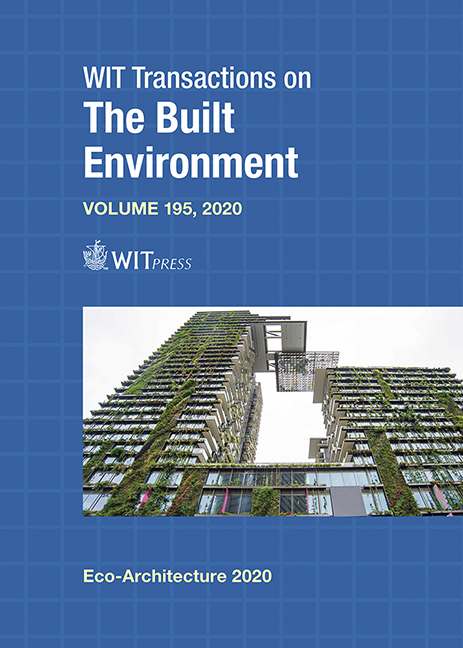SUSTAINABLE HABITAT IN BURKINA FASO: SOCIAL TRAJECTORIES, LOGICS AND MOTIVATIONS FOR THE USE OF COMPRESSED EARTH BLOCKS FOR HOUSING CONSTRUCTION IN OUAGADOUGOU
Price
Free (open access)
Transaction
Volume
195
Pages
8
Page Range
165 - 172
Published
2020
Paper DOI
10.2495/ARC200131
Copyright
WIT Press
Author(s)
OUSMANE ZOUNGRANA, MAIMOUNA BOLOGO-TRAORE, CESAIRE HEMA, PHILBERT NSHIMIYIMANA, GAUTIER PIROTTE, ADAMAH MESSAN
Abstract
This study explores the logics, motivations and issues related to the construction of sustainable housing made of compressed earth blocks (CEB) material in the city of Ouagadougou. In Burkina Faso, a landlocked country with limited natural resources and predominantly warm dry climate, most buildings are made of local materials. Historically, people built their habitats using mud brick (adobe). However, with the irreversible process of urbanization, the construction sector recorded changes with an increase in concrete-based, hollow cement blocks (HCB) constructions. Besides this trend, individualistic strategies are moving towards other types of materials such as CEB. Throughout a qualitative approach, the present study intends to show that the use of eco-materials, like the CEB, is the concern of middle class population who has broken with the “all in concrete” in the construction of their housing. This study also reveals that the owners of CEB-based housing are mostly city dwellers endowed with considerable cultural and economic capital. It also briefly reveals that the logic behind the use of the CEB is based on the social distinction of city dwellers, having both a romantic and Romanesque vision of earth-based construction. Moreover, this mode of construction is associated with a post-modern vision of sustainable development (less energy and resources consuming constructions, reduction of the electricity bill, etc.), but also with an ecological reasoning that cannot be afforded by the common population in Burkina Faso.
Keywords
compressed earth block, housing, social distinction, sustainable development, Burkina Faso





